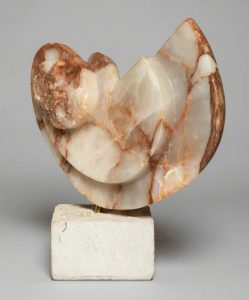Granite Stone
Granite Stone is one of the hard igneous rock with a coarse-grained surface, specially composed of four minerals including quartz, alkali feldspar, plagioclase feldspar, and hornblende .The word “granite” comes from the Latin granum, a grain, referred to the coarse-grained form of such a polycrystalline rock. The term ‘granite’ also refers to a group of intrusive igneous rocks with similar foundation and small differences on composition and origin. Granite stone is visibly homogeneous in texture. This unique and elegant natural stone is one of the oldest, hardest, and strongest stones available. A truly beautiful natural stone with hundreds of colors and patterns to choose from. The minerals provide the different colors to the granite that it possesses. It ranges in color from pink and red to light or dark gray or a mix of these. It is generally uniform in color and has high compressive strength and abrasion resistance. Granite being an igneous rock is formed from the process of magma cooling. This magma, which cools far below the earth’s surface at a slow and steady rate, results in the expansion of the aforementioned minerals to a level that they can be conveniently seen with naked eyes. An important thing about granite is that it is not a homogeneous rock, thus its chemical properties vary according to its location.
Marble Stone
Marble Stone is an extremely hard, metamorphic stone composed of calcite(CaCO3). It is formed as a result of the recrystallization of limestone under the intense pressure and heat of geologic processes. The effect of this process is the creation of a stone with a very tight crystalline structure and small but definite porosity. Because of its structure, marble can take a very high polish and is a very popular decorative stone for architectural and sculptural uses. It has been a symbol of beauty in the grand buildings built by emperors. Marble is used in both internal and external applications, and is available in several colors and shapes.Impurities present in the limestone during the recrystallization period affect the mineral composition of the marble which is formed. The minerals that result from impurities give marble a wide variety of colors. The color of marble ranges from the brilliant white of calcite to black, including blue-gray, red, yellow and green, depending upon the mineral composition. Marble that has limonite is yellow, and marble with serpentine is green in color. The purest calcite marble is white in color. Marble containing hematite is reddish in color.
Travertine Stone
Travertine Stone is a white massive concretionary form of calcium carbonate, CaCO3 which is formed by calcium carbonate dissolving in ground water and then being deposited on the earth’s surface by rivers, natural springs, or geysers. One of the most versatile, durable and elegant looking floor cover is none other than the one made from travertine. Travertine is part of the larger group of stone known as limestone (or calcium carbonate). This type of stone is formed when subterranean water sources collect mineral deposits over thousands of years, eventually producing a smooth, porous stone. Travertine is derived from limestone that has been heated and then propelled through the earth by water. Travertine is usually hard and semi crystalline. It has a layered appearance and in pastel shades of almost beautiful colors and banded as a result of the iron compounds presence or some other impurities. Generally travertine is less coarse-grained and takes a higher polish than stalactite or stalagmite whose chemical composition and origin are similar. Although referred to as “Onyx” in commercial trade, it has the hardness of calcite that is much softer than real Onyx which is a black and white banded agate. In hardness, travertine is similar to marble. travertine tiles come in a variety of shades and finishes
Onyx Stone
Onyx Stone is a banded variety of chalcedony which also includes carnelian, agate, bloodstone, etc . The colors of its bands range from white to almost every color (save some shades, such as purple or blue). Commonly, specimens of onyx contain bands of black and/or white. The name comes from the Greek word onyx which means nail of a finger or claw. Legend says that one day while Venus was sleeping Eros/Cupid cut her fingernails and left the clippings scattered on the ground. Because no part of a heavenly body can die, the gods turned them into stone which later became known as onyx. Onyx is an extremely variable stone with heavy veining. No two pieces of onyx are ever exactly alike, and one slab might contain dozens of colors. Onyx is formed from carbonate minerals that are dissolved when dolomite sediments or limestone have contact with hot water. Heat from volcanic activity helps the onyx to form. Onyx refers to layered stones and usually this material is cut from agates or other chalcedonies with even parallel layers, mostly with a lighter layer above a darker one. Onyx may be a multilayered black and white stone, usually with a black base and a white upper layer. But it may also be brown and white, as in sardonyx; or red and white as in carnelian onyx.

